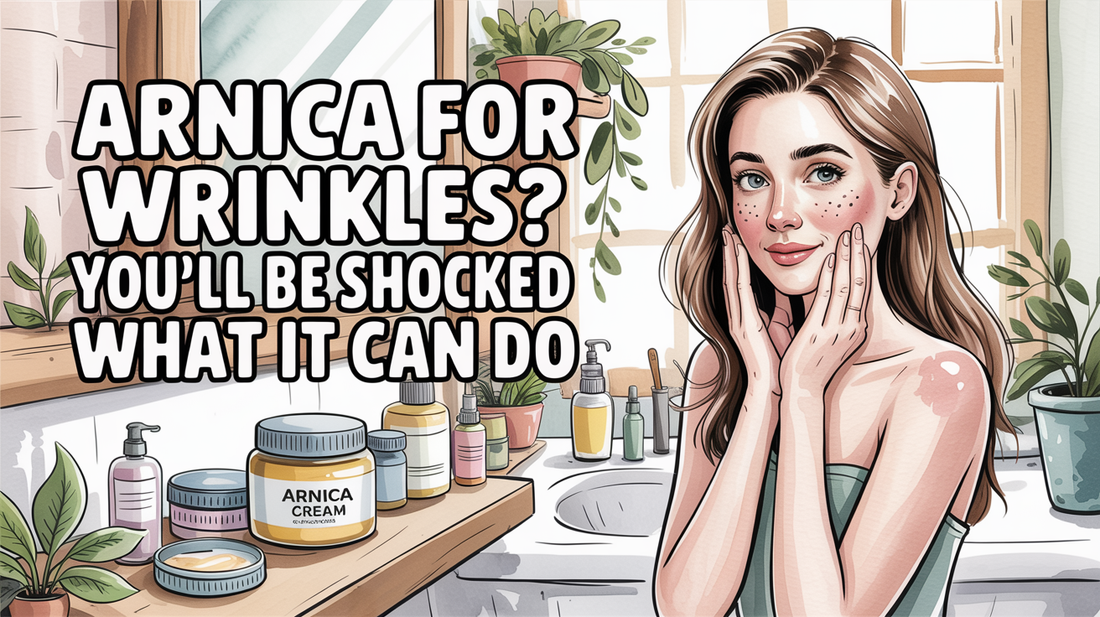Is it safe to put arnica on your face?
Many people wonder if using arnica on the face is safe. In this post, we will delve into the concept of arnica face safe practices, the importance of patch test skincare, and essential herbal precautions to consider. We’ll break down the information into three easy-to-follow sections so you can make informed choices for your facial care routine tonight.
Is Arnica Safe for Face Use?
When it comes to using arnica on your face, safety is key. Generally, arnica is deemed safe for topical facial use when it is properly diluted and applied externally. However, individual reactions can vary greatly. Most commercial arnica products are formulated at concentrations that are considered safe for skin application.
Arnica montana has a long history as an herbal remedy, utilized topically for centuries. The FDA recognizes it as safe for external use as long as it is prepared and diluted correctly. Importantly, pure arnica extract should never be applied directly to the skin without dilution. Most arnica creams and gels contain concentrations ranging from 10% to 15%, which is suitable for most skin types.
- Arnica montana has been used topically for centuries.
- The FDA considers arnica safe for external use when prepared and diluted correctly.
- Pure arnica should never be applied directly to the skin.
- Commercial products usually contain 10-15% arnica concentration.
- Facial skin is more sensitive, so caution with concentration is essential.
Try It Tonight: Eye & Skin Refresh ✨
- Remove makeup and cleanse gently with lukewarm water.
- Apply a cool compress or take a few deep breaths to relax facial tension.
- Lightly dab a pea-sized amount of Jane Vine Arnica Gel under eyes or on areas of concern. Always patch-test first if you’re new to arnica-based skincare.
Benefits of Topical Use
The topical application of arnica is highly valued for its anti-inflammatory and circulation-enhancing properties, which may support facial skin when used appropriately. Users often report potential benefits for reducing bruising, minimizing swelling, and aiding in skin healing.
Arnica contains anti-inflammatory compounds such as helenalin and flavonoids, which are known to help with minor facial injuries or aesthetic procedures. Many people find that it can enhance circulation and promote healing of minor skin irritations. Some have even noted a reduction in puffiness and dark circles around the eyes.
- Contains anti-inflammatory compounds that can soothe the skin.
- May help reduce bruising and swelling from minor injuries.
- Can promote healing of minor skin irritations.
- Some users experience benefits for puffiness around the eyes.
- Supportive for post-procedure recovery after cosmetic treatments.
Why We Recommend a Gentle Helper 🌿
Jane Vine Arnica Gel is designed for quick absorption and has a soothing, lightweight texture. It may help calm your routine and potentially reduce the appearance of puffiness and skin stress over time.
- Fast-absorbing comfort—no greasy residue.
- Gentle, cooling sensation designed for delicate skin.
- Clean, naturally inspired formula with a fresh finish.
Precautions 🔍
While arnica is generally regarded as safe, its use on facial skin necessitates careful precautions due to the possibility of allergic reactions and skin sensitivity. Proper testing and application methods are crucial.
Before using arnica on your face, always perform a patch test on a small area to ensure compatibility. It’s important to avoid applying it on broken, cut, or severely irritated skin, as this can lead to adverse reactions. Some individuals may experience contact dermatitis, particularly if overused. Never apply arnica to open wounds or near the eyes without guidance from a professional.
- Always perform a patch test on a small area before applying to the face.
- Avoid use on broken or irritated skin.
- Can cause contact dermatitis in sensitive individuals.
- Do not apply to open wounds or near the eyes without professional advice.
- Discontinue use if redness, itching, or irritation occurs.

